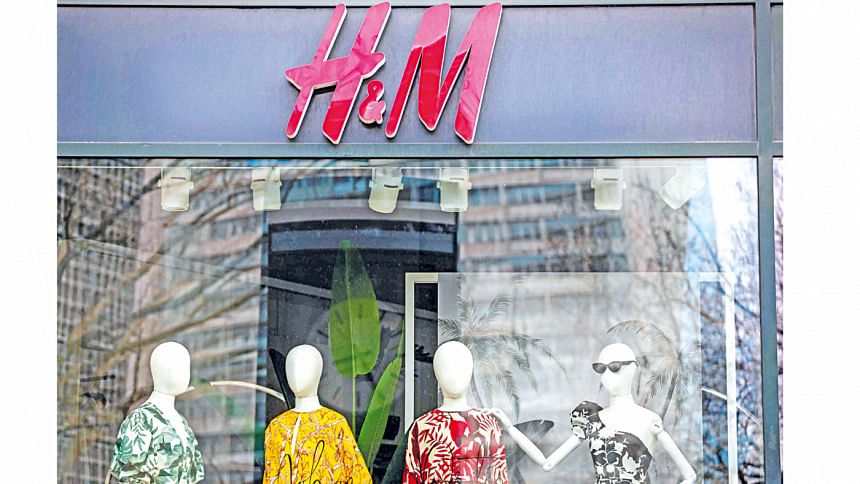The other side of global retailers

While Bangladesh's garment sector struggles to transition from basic products to high-end items, too many companies are going in for the same international contracts, intensifying competition among themselves.
Because of the saturation in the sector, Bangladesh has become very much a buyer's market, a situation that favours buyers over sellers. As a result, international brands and retailers hold sway and use it to secure deals on their terms.
Buyers always put pressure on local suppliers to lower prices. Consequently, Bangladeshi exporters earn almost half of what their Vietnamese counterparts take home for the same product, according to studies. But despite offering the products at reduced prices, local suppliers are left to wrangle with complications as, in many cases, buyers don't pay money on time and demand long-term deferred payments.
Some retailers even import goods and sell them before making payments. This causes delays in receiving payments, which ultimately increase the cost of finance, bringing in further impediments to suppliers. This scenario can worsen at times. For instance, during the Covid-19 pandemic, suppliers faced order cancellations worth $3.18 billion.
Additionally, many retailers and brands could not clear the bills on time and demanded abnormal deferred payments for up to 220 days instead of the normal 60 days or a maximum of 90 days. Eventually, after many days, retailers and brands paid local suppliers. Even today, a few suppliers are yet to receive payments as two or three retailers and brands have gone bankrupt and are facing court cases in their countries.
In other cases, buyers have not fulfilled their promises. For instance, many buyers promised to increase the price of garment items after workers were given a wage hike in December last year. Most buyers have not revised up the rate yet.
Bangladesh exports garment items to 167 countries through more than 300 small, medium and large enterprises. China, India, Vietnam, Cambodia, and Pakistan are as strong as Bangladesh in terms of producing items that perform well in European markets. This means that only advantages in trade, such as zero duty or lower tariff rates, determine profit.
In response to such challenges, Faruque Hassan, president of the Bangladesh Garment Manufacturers and Exporters Association (BGMEA), urged big local enterprises to begin marketing their own brands in both domestic and international markets.
"The big local groups should launch their own brands at home and abroad as they have grown significantly over the years."
He thinks three to five local large garment groups can start and invest in brand development at any time as they are already mature enough.
Industry people say marketing and selling products directly to consumers could solve many of the garment sector's problems. Chiefly, it would offer them higher profit margins by cutting out the middlemen. It would also offer companies a chance to become established by creating a strong identity and associating it with their brands.
Furthermore, it will provide freedom in setting prices and, by bypassing the traditional retail model, products can be brought to market more quickly. It will also lessen the overreliance on buyers, which will offer a way to diversify revenue streams.
Overall, marketing and selling products directly to consumers can provide greater control, flexibility, and profitability, while also laying the foundation to build customer loyalty over time.
However, there are challenges for local companies. First, without enough experience about the preferences of international consumers, such brands may never take off. Building brand awareness from scratch can be a challenge.
Moreover, there are numerous legal complexities, not to mention logistical barriers.
Another major problem, Hassan points out, is the lack of a policy for virtual marketplaces. "In fact, we have all realised the significance of the virtual marketplace during the lockdown periods brought on by the coronavirus pandemic."
The BGMEA has commissioned a feasibility study to develop a virtual platform tailored for Bangladesh's textile and apparel sector.
Limitations arising from the regulatory framework, particularly in the realm of cross-border transactions and foreign currency policies, serve as an impediment for the apparel industry to tap the burgeoning global e-commerce market.
Revenue in the global e-commerce market is projected to reach $5.31 trillion by 2028, according to Statista, a German online platform that specialises in data gathering.
The absence of global payments gateways, challenges in securing working capital financing, cumbersome export processing for small orders, and an impractical return policy, where returns are categorised as imports, constitute substantial barriers to establishing a robust digital marketplace, said Hassan.
"All of these factors are also causing large enterprises to shy away from branding. But if they want to become truly independent, it seems there is no other path."

 For all latest news, follow The Daily Star's Google News channel.
For all latest news, follow The Daily Star's Google News channel. 








Comments